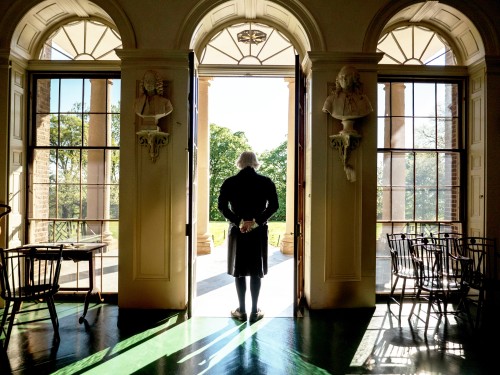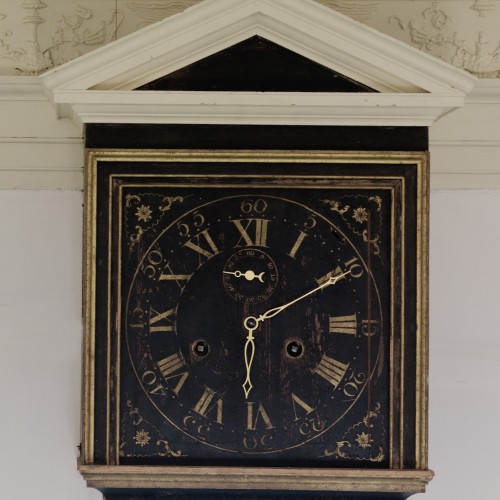One of Monticello's most memorable features is the Great Clock, designed by Jefferson, built by Peter Spruck in 1792, and fully functional today. The clock, with both an interior and exterior face, dictated the schedule of the entire plantation, inside the building and out. On the outside wall, the clock has only an hour hand, which Jefferson believed was accurate enough for outdoor laborers. The inside face of the clock reveals much greater precision by offering not only hour and minute hands, but also a smaller dial for a second hand.



The Great Clock at Monticello

Monticello's Great Clock

Weekly Winding of the Great Clock

The Striking of the Great Clock
Powering the Great Clock
The Great Clock is driven by two sets of cannonball-like weights, which hang on both sides of the front doors. On Sundays the clock is wound with the help of a folding ladder, and the weights are raised to the ceiling. Throughout the week, the top ball on the right-hand set of weights reveals the day and even the approximate hour as it falls past markers on the wall, with Sunday at the top and Saturday at the bottom. The clock is also attached to a Chinese gong that chimes the hour. In the eighteenth century, the gong rang loudly enough for field slaves to hear it three miles away.
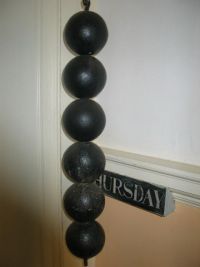
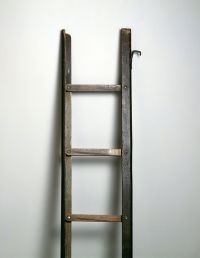
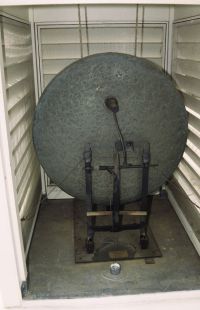
A Six-Day Wall
There is a hitch, however; upon the arrival of weights for its installation at Monticello, it was discovered that the height of the Entrance Hall was shorter than the length of the ropes. Jefferson's solution? To allow the weights "to descend naked till they get to the floor where they may enter a square hole and go [on?] to the cellar floor. . . ." The holes were cut, the weights were hung, and the marker for Saturday may be found on the basement level of the house.
The Great Clock Gallery

The interior face of the Great Clock
